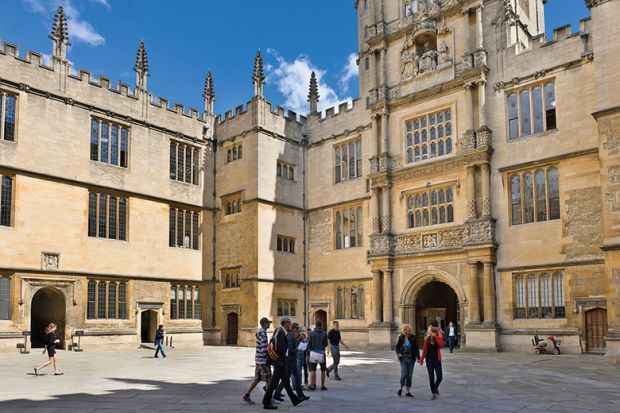A report by the University of Oxford has shown a large disparity in the socio-economic make-up of students on its core courses.
The study profiles Oxford’s undergraduate intake for the first time, covering admissions and applications from 2013 to 2017, and breaks down the background of students admitted to its 25 most popular undergraduate degrees.
According to Oxford, the highest proportion of state school students is to be found on computer science courses: between 2015 and 2017, 77.8 per cent of UK students enrolled in the subject were from a state school.
The same applies to those from the least advantaged areas in the UK: the highest proportion, 15.8 per cent, of students from the bottom two categories of socio-economic advantage were admitted to computer science courses.
This compares sharply with the university’s Classics courses, which admitted the smallest proportion of students from financially disadvantaged areas, 5.2 per cent, or from state schools, 28.9 per cent.
According to Oxford, UK state school students apply “disproportionately” for the most oversubscribed subjects. Between 2015 and 2017, 35 per cent of state applications were for five of the most popular courses at the university – economics and management; medicine; philosophy, politics and economics; law; and mathematics – compared with 29.8 per cent of applications from private school pupils.
In contrast, 21 per cent of private school applications were for five of the least popular subjects – Classics; music; modern languages; chemistry; and English – compared with 16 per cent of state school applications.
The intake of black and ethnic minority students from the UK on Oxford’s courses ranged between 3.6 per cent – for earth sciences – and 32.1 per cent – medicine – between 2015 and 2017. The applications for these two subjects also varied widely: only 27 ethnic minority students applied to study earth sciences, compared with 1,352 for medicine.
Student from ethnic minority backgrounds are more likely to apply for the most competitive courses than white students, according to the report. From 2015 to 2017, 41 per cent of applications from black students and 28 per cent of the total UK-domiciled ethnic minority applications were to study medicine and law, whereas only about 12 per cent of applications from UK-domiciled white students were for these courses.
The report does manage to show that the university, often criticised for its failure to admit disadvantaged pupils, is making gradual increases to admit under-represented groups overall.
In 2017, Oxford’s state school intake at undergraduate level was 58.2 per cent, compared with 58 per cent in 2016 and 55.6 per cent in 2015. Between 2013 and 2017, the percentage of ethnic minority students admitted rose from 13.9 per cent to 17.9 per cent of all UK undergraduates and the proportion from disadvantaged areas rose from 6.8 per cent to 10.6 per cent during the same period.
However, the most recent figures from the Higher Education Statistics Authority show that last year, Oxford was still one of the worst institutions for letting in state school pupils. The university admitted that the report shows that it must make better progress and “still has more work to do in attracting the most talented students from all backgrounds”.
Register to continue
Why register?
- Registration is free and only takes a moment
- Once registered, you can read 3 articles a month
- Sign up for our newsletter
Subscribe
Or subscribe for unlimited access to:
- Unlimited access to news, views, insights & reviews
- Digital editions
- Digital access to THE’s university and college rankings analysis
Already registered or a current subscriber? Login







